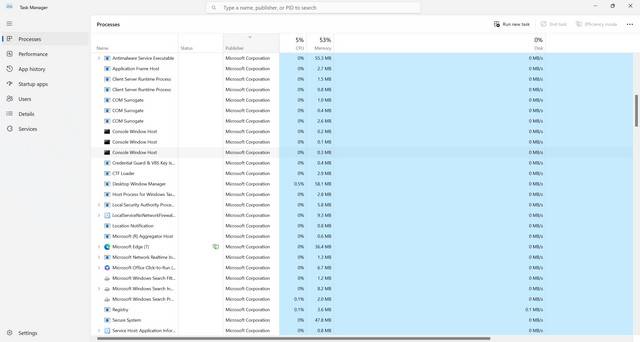When you open the Windows Task Manager, you may come across a process called mqsvc.exe running in the background. This may raise questions about its purpose and whether it is necessary for your system’s functionality. In this article, we will explore what mqsvc.exe is, its role in the Windows operating system, and whether you should consider disabling it.
What is mqsvc.exe?
Mqsvc.exe is an executable file that stands for Message Queuing Service. It is a legitimate Windows process that is responsible for managing and facilitating message queuing operations. Message Queuing is a technology developed by Microsoft that enables applications to communicate with each other asynchronously by sending and receiving messages.
The primary purpose of mqsvc.exe is to provide support for applications that rely on message queuing functionality. It ensures the smooth transmission and delivery of messages between different applications or systems, even if they are not actively connected at the same time.
What does Mqsvc.exe do?
The Message Queuing Service plays a crucial role in various scenarios, including:
- Enterprise Messaging: Large organizations often use message queuing to enable communication between different departments or systems. Mqsvc.exe ensures the reliable delivery of messages, even in complex network environments.
- Distributed Applications: Message queuing allows distributed applications to exchange information and coordinate tasks. Mqsvc.exe ensures that messages are delivered in the correct order and without loss.
- Asynchronous Communication: By decoupling the sender and receiver, message queuing enables asynchronous communication. Mqsvc.exe ensures that messages are stored and delivered when the recipient is available.
Should You Disable mqsvc.exe?
While mqsvc.exe is an essential component for certain applications and systems, it may not be necessary for every user. Disabling mqsvc.exe can help reduce system resource usage, especially if you do not use any applications or services that rely on message queuing.
However, before deciding to disable mqsvc.exe, it is crucial to consider the potential impact on your system. Disabling the Message Queuing Service may cause certain applications or services to malfunction or become unstable. Therefore, it is recommended to assess your system’s requirements and dependencies before taking any action.
If you are unsure whether you need mqsvc.exe or not, you can follow these steps to determine its significance:
- Open the Windows Task Manager by pressing Ctrl + Shift + Esc or right-clicking on the taskbar and selecting Task Manager.
- Switch to the Processes tab.
- Locate and right-click on mqsvc.exe.
- Select Open File Location to navigate to the folder where mqsvc.exe is located.
- Examine the applications or services associated with mqsvc.exe. If you recognize any critical applications or services that rely on message queuing, it is advisable not to disable mqsvc.exe.
If you determine that mqsvc.exe is not essential for your system, you can disable it by following these steps:
- Open the Windows Services Manager by pressing Win + R to open the Run dialog, typing services.msc, and pressing Enter.
- Scroll down and locate the Message Queuing service.
- Right-click on the service and select Properties.
- In the General tab, change the Startup type to Disabled.
- Click Apply and then OK to save the changes.
It is important to note that disabling mqsvc.exe may impact the functionality of certain applications or services. Therefore, it is recommended to create a system restore point or backup your important data before making any changes.
Conclusion
Mqsvc.exe, also known as the Message Queuing Service, is a legitimate Windows process responsible for managing message queuing operations. It plays a crucial role in enabling communication between applications and systems, especially in enterprise environments and distributed applications.
While mqsvc.exe may not be necessary for every user, disabling it should be approached with caution. Disabling the Message Queuing Service can help reduce system resource usage, but it may cause certain applications or services to malfunction. It is recommended to assess your system’s requirements and dependencies before deciding to disable mqsvc.exe.
If you determine that mqsvc.exe is not essential for your system, you can disable it through the Windows Services Manager. However, it is advisable to create a system restore point or backup your data before making any changes.
Remember, if you suspect any malicious activity or want to ensure the security of your system, it is always recommended to run a scan with a reliable antivirus software like Malwarebytes Free. This will help detect and remove any potential threats that may be disguising themselves as legitimate processes like mqsvc.exe.











